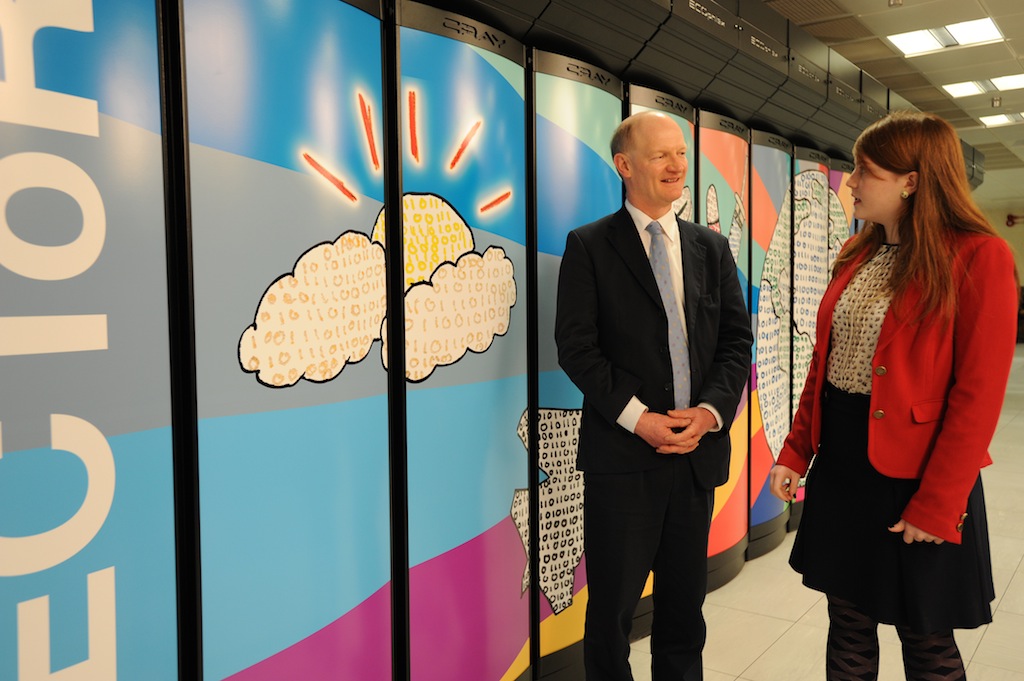Implementation of established algorithms to extend HELIUM
The goal of this Distributed Computational Science and Engineering (dCSE) project is to enhance the performance and extend the functionality of the numerical integration code HELIUM. HELIUM generates accurate full-dimensionality solutions of the non-relativistic time-dependent Schröedinger equation for two-electron atoms or ions exposed to intense laser radiation. The HELIUM code is one of the scientific codes used to benchmark hardware performance on HECToR. It is the world-leading HPC code in its field. Important current applications of HELIUM include the study of electronic dynamics on atto-second time-scales, intense-field interactions with XUV radiation generated by Free-Electron lasers, and atom-laser interactions at Titanium-Sapphire laser wavelengths, all of which are currently being pursued experimentally worldwide.
Results obtained using HELIUM exceed in accuracy those gained in laboratory experiment and HELIUM is thus complementary to laboratory experiment in making scientific discovery. This project is concerned with improving the performance of HELIUM on many-core architectures and extending the functionality of HELIUM itself and its methods into multi-electron systems.
The key aims of the project are:
- Extend HELIUM to allow calculations with crossed laser fields.
- Implement hybrid MPI-OpenMP parallelism in HELIUM.
- Develop a new parallel postprocessing code to transform HELIUM output from spherical to cylindrical geometry.
- Implement a new final-state momentum-space code for HELIUM.
- Develop new parallel code to extend the capability of HELIUM for the electron dynamics occurring within many-electron atoms exposed to intense short-pulse light.
The individual achievements of the project are summarised below:
- A new code to enable HELIUM to perform calculations with crossed laser fields was developed. On HECToR, the performance exhibits better-than-linear scaling. Moving from a core count of 253 to 8001, the code runs almost a factor of four times faster than the expected 31 times increase. This is attributed to the fact that the local arrays can be distributed over the 8001 cores, enabling them to fit in the fast L1 cache, whereas on 253 cores they would not fit in the L2 cache and spilled out into slower memory.
- Hybrid MPI-OpenMP method (using only the master OpenMP thread for MPI communication) was implemented to enable OpenMP parallelism over the basis sets and thus complement the existing MPI parallelism over the radial grid. This has enabled scalability to higher core counts for a given problem size and a more efficient usage of memory per node.
- A parallel post-processing code (CYLINDRICAL) was developed in order to transform output from spherical to cylindrical geometry. The task performed in CYLINDRICAL requires a large amount of computational effort and has been tested on up to 16,000 cores on HECToR.
- Three new methods for the transformation of the final-state wavefunction from configuration space to momentum space have been developed. Tests on HECToR have verified that the three new methods and the old method give identical results on a range of core counts. Application of the new methods to a very large full size wavefunction using 8001 processors of HECToR phase 2b shows that the newer methods are up to 20 times faster than the old method.
- A scalable parallel RMT (R-matrix Incorporating Time) ab initio computer code has been developed. This allows an accurate description of the many-electron response leading to single ionization of many-electron atoms and atomic ions exposed to an intense laser light pulse. The work from this dCSE project will also provide the foundation to describe many-electron dynamics within molecular systems.
The software developments for the main HELIUM code are aimed at improving our ability to model and analyse the exchange of energy between the laser and atom during calculations of correlation between pairs of electrons ejected from the atom by the strong laser fields (known as non-sequential double-electron ionization).
For more information about these developments and the new methods to analyse the wavefunctions generated by HELIUM, please see PDF or HTML for a report which summarises this part of the project.
The RMT code will be of benefit to those UK research groups developing and applying Attosecond Technology including STFC's Central Laser Facility and Imperial College London. It is expected that near-future advances in Attosecond Technology will have a strong impact on the future of molecular electronics and possibly medical research. The ab initio nature of the RMT code allows for not only the description and understanding of experimental measurements, but also the prediction of physical phenomena occurring in intense laser-atom interactions where more than just a single electron strongly participates. Using the RMT code with the supercomputing resource of HECToR will help point the way for future experimental work at a wide range of laser labs throughout the world including large-scale Free-Electron Laser facilities in Europe, the US and Japan.
Please see PDF or HTML for a report which summarises the R-matrix Incorporating Time part of the project.
